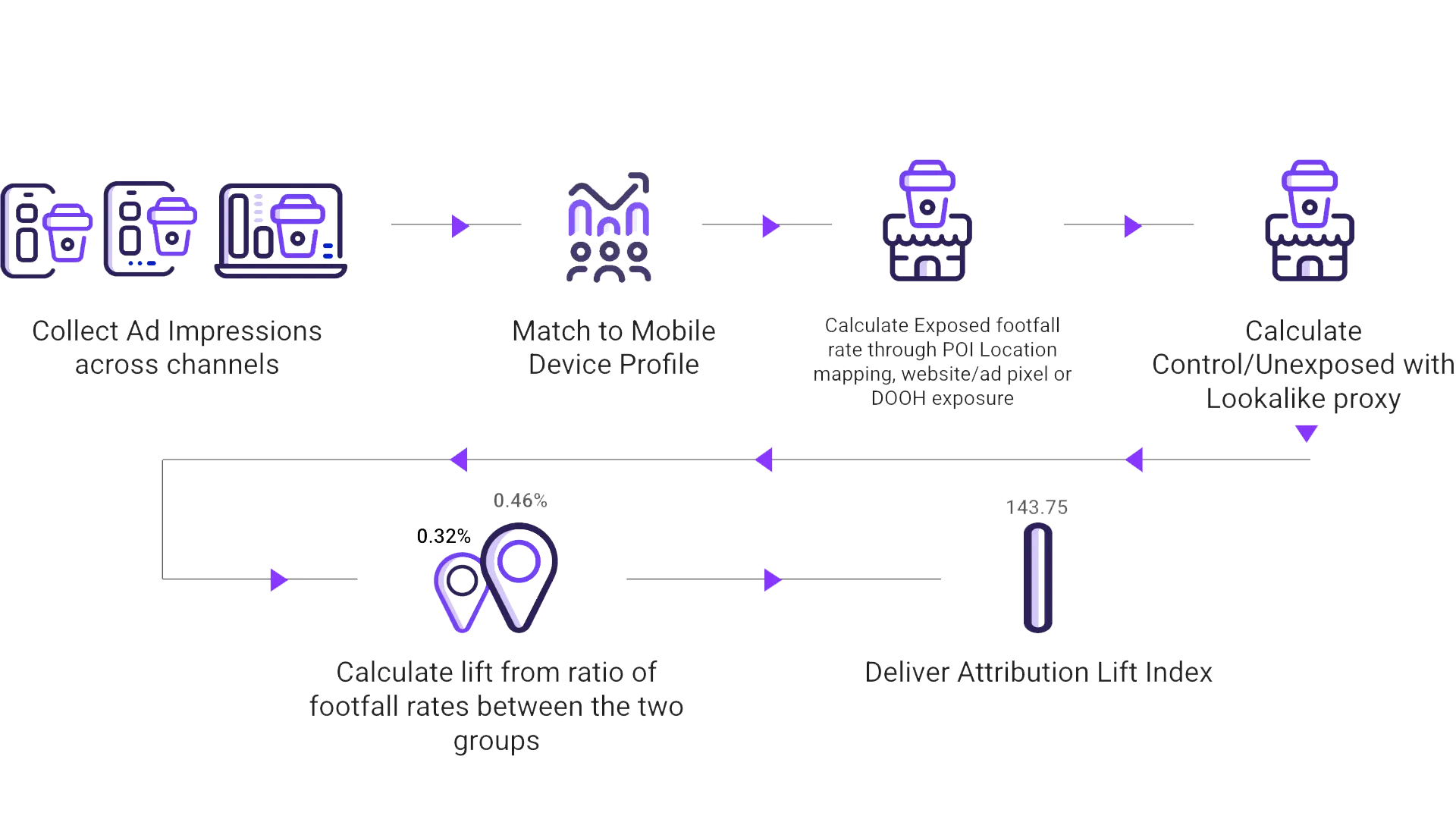5 Essential Strategies to Measure and Maximize the Real-World Impact of your Digital Campaigns


Cross-channel measurement is one of the biggest challenges marketers face today. A recent survey from eMarketer revealed that 44% of respondents struggle with this. But why is it becoming increasingly more difficult, and how can marketers overcome this obstacle to provide a complete view of their media performance?
Location intelligence plays a critical role in bridging this gap, allowing brands to measure online to offline attribution. However, achieving accurate campaign attribution requires a methodical, data-driven approach.
With location-based insights, marketers can understand:
- Who customers are (demographics)
- Where they have been
- When they visit places
Using real-world insights in advertising campaigns improves targeting resulting in impactful campaigns that drive Return on Ad Spend (ROAS). Let’s take a look at how footfall attribution works, and how Azira empowers marketers to connect digital campaigns to real-world outcomes.
How Azira’s Location-Based Footfall Attribution Works
Footfall attribution is a powerful tool for measuring the effectiveness of your campaigns.
Azira uses a pixel to track when a custom audience views an ad without relying on cookies. We then monitor when that device visits a desired store location within a specified timeframe, allowing marketers to match ad impression data from digital campaigns to the custom audience that was served.
With Azira’s location data, marketers can determine whether a customer visits the store and which media channel is driving the most traffic. The pixel enables marketers to establish a clear connection between ad impressions and actual visits or conversions.
With footfall attribution, marketers can successfully:
- Measure the real-world impact of a campaign or digital spend
- Optimize campaigns to drive timely store visits
- Prove marketing Return on Ad Spend (ROAS)
While footfall attribution offers a powerful way to connect digital impressions to in-store visits, leveraging it effectively involves taking a comprehensive approach to real-world metrics.
How Azira Delivers Real-World Measurement
Azira begins by collecting data from pixels within ad impressions across multiple channels, including mobile, desktop, connected TV, audio, and more. These pixel fires are then matched to anonymous mobile device profiles using Azira's proprietary device graph. By mapping these devices to specific points of interest, and tracking pixels on websites or within ads, Azira can accurately determine which devices have been exposed to campaigns.
Next, Azira calculates the exposed footfall rate, which represents the percentage of exposed devices that visit the locations. To ensure reliable results, Azira creates a control group of unexposed, lookalike devices for comparison. This enables Azira to measure the true lift in store visits that can be directly attributed to the campaign.

5 Essential Strategies for Effective Advertising Attribution
While Azira’s methodology ensures accurate measurement of campaign impact, leveraging this data effectively requires a strategic approach. Here are our five essential strategies marketers should use to drive measurable results:
01
Reliable Measurement Starts with High-Quality Data
The foundation of accurate attribution lies in robust data collection and processing. High-quality data ensures that every insight is meaningful and actionable. To achieve this:
- Develop a precise data framework using venue mapping, representative audience panels, and robust control groups.
- Leverage multiple data sources to ensure comprehensive coverage — for example, Azira’s data is sourced via integrations with mobile apps and SDK providers.
Prioritize data integrity with rigorous validation, cleansing, and compliance with privacy regulations like GDPR and CCPA.
02
Ensure Statistical Validity with Representative Panels
For attribution to provide meaningful insights, your analysis must represent real-world scenarios accurately. Achieving statistical validity involves:
- Balancing scale and quality by determining minimum dataset size and when accuracy declines.
- Ensuring geographic and demographic representation while accounting for device activity variations.
- Using matched control groups to model visitation patterns unaffected by media exposure to provide a valid comparison.
03
Focus on Visit Measurement Accuracy
Precision matters when mapping digital exposure to real-world visits. To improve measurement accuracy:
- Define precise location boundaries and representative dwell times to help distinguish what is an actual visit, versus what is not.
- Use mathematical models to validate visitation rate confidence. You can learn more about this from our Location Measurement and Attribution Methodology.
04
Understand the Full Impact with Integrated Insights
Partial data can lead to partial insights. To fully understand campaign impact:
- Incorporate unobserved visits using statistical modeling, accounting for device activity variations, and validating against real-world data.
- Measure across all channels with common identifiers for in-app impressions and probabilistic matching for cookie-less environments (web, CTV, audio).
- Analyze channel interactions and synergies, including partner-specific impacts, by measuring how different marketing channels complement each other to drive incremental store visits.
05
Define Performance Metrics and Measure What Matters
Set clear goals and focus on the metrics that align with your objectives. Some effective metrics include:
- Incremental Lift Analysis: Measures additional visits or sales driven by your campaign.
- Cost Per Incremental Visit: Helps determine if your campaign was cost-effective and compares efficiency across different channels or campaigns.
Once you’ve determined your metrics, evaluate results by geography, audience, channel, creative, and timing to optimize future efforts.
Mastering cross-channel measurement and attribution is essential for marketers to link digital efforts to tangible, real-world results. By leveraging accurate data, controlling for variables, and measuring visit rates, Azira enables marketers to understand their audiences, optimize their advertising strategies, drive more foot traffic to their businesses, and achieve true ROAS.
Ready to make the most of your digital ad campaigns? To learn more, access our on-demand webinar or contact us today.


